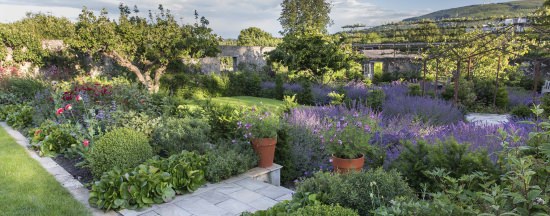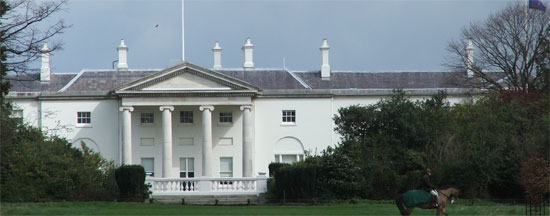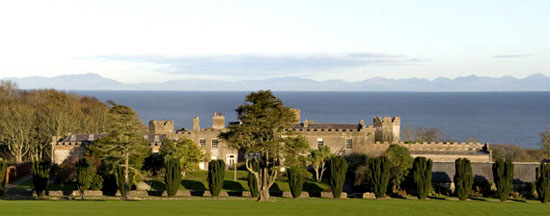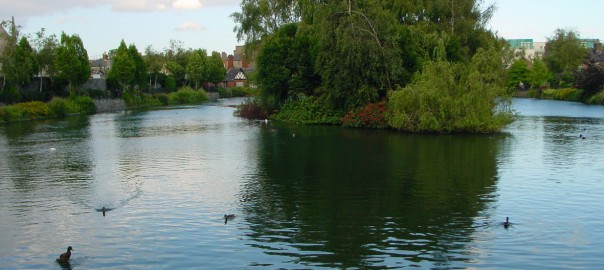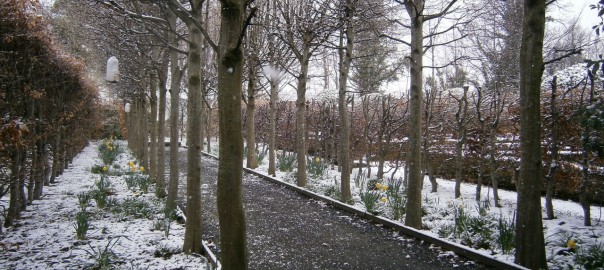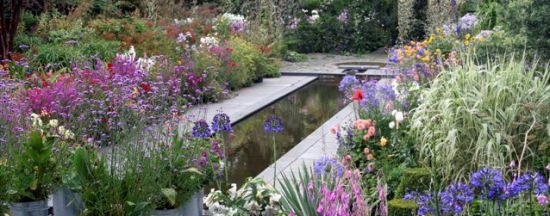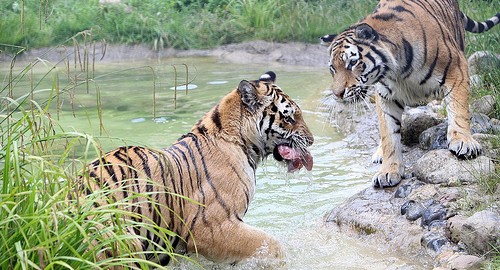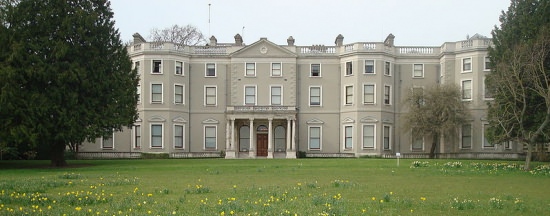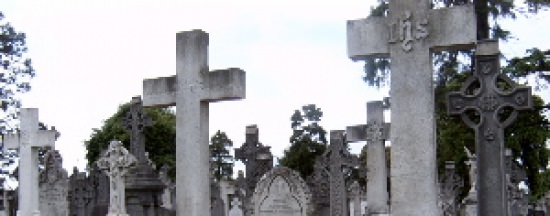In 1893, a successful Dublin solicitor named Trevor Overend purchased an 18th century farmhouse in Dundrum, Co. Dublin. The property was eventually inherited by his two daughters, Letitia and Naomi Overend. They lived there all their lives and prior to their death they set up the Airfield Trust, so that the estate would be kept intact for educational and recreational purposes.
The Overend ladies were well known for their prize-winning Jersey herd, named after characters from Gilbert & Sullivan operettas. They were regular prize winners at the RDS Spring Show. Their life and times can be appreciated via the Airfield House exhibition. The lasting effects of their fundraising and charity work for St John’s Ambulance brigade and Children’s Sunshine Home can be seen through an impressive collection of photographs, diaries and press clippings. They were also ladies who knew how to enjoy themselves, as evidenced by the memorabilia they gathered from their travels. Both sisters were also very interested in gardening.
The Airfield farm (20 acres), gardens, restaurant and heritage experience offer visitors a unique opportunity to enjoy and learn about food, farming, gardening, history and heritage in a natural and relaxed environment.
The farm at Airfield is a fine working example of environmentally sustainable agriculture in Ireland. Visitors are encouraged to explore and experience farm life up close. This is a working farm with a milking Jersey herd, as well as Jacob sheep, Oxford sandy black pigs, Saneen goats, Rhode Island red hens, chickens and donkeys.
The Jersey herd is milked once a day as part of Airfield’s commitment to sustainable farming. Visitors can watch the herd being milked, understand the pasteurisation process and taste the fresh, creamy milk used across the estate.
Throughout the year specialised events like lambing, calving and shearing highlight what is typically going on in farms around the country. Airfield is a working farm with a milking Jersey herd, as well as sheep, pigs, chickens and donkeys. The farm has 50 laying hens including Rhode Island Red Hybrids and fancy fowl such as Legbars and Arucanas.
The gardens in Airfield are just over six acres in size and composed of diverse spaces ranging from an ornamental walled garden, shade gardens and glasshouse spaces, to an extensive organic certified fruit, vegetable and edible flower garden. You can also visit a greenhouse garden, an orchard border, a sunken garden and a potting shed order.
The temperate climate of south Dublin accommodates a large variety of plants to be grown on site which provides year-round interest to any visitor. The gardens are managed organically which helps contribute to a vibrant biodiverse green space.
The display garage for vintage cars is a fine setting for Letitia’s 1927 Rolls Royce, Naomi’s Austin Tickford and Lily’s Peugeot Quadrilette.
Opening Hours:
General opening hours all year round are Wednesday to Sunday, 9.30am – 4.30pm, however opening days and hours vary monthly.
Not all features of the estate are open during general opening hours, and some or all may be closed for private functions. Please check here for detailed opening hours.
When open, there are daily activities including Egg Collection (10am), Jersey Herd Milking (10:30am) and Heritage Tours (12 & 2pm).
Special evening events and workshops may also be available for booking.
The Farmers Market is open Fri & Sat, 9am – 2.30pm.
Contact & Pricing:
airfield.ie
hello@airfield.ie
Tel: 01 969 6666
Overend Ave, Dundrum, Dublin 14.
Adults €12; concessions
